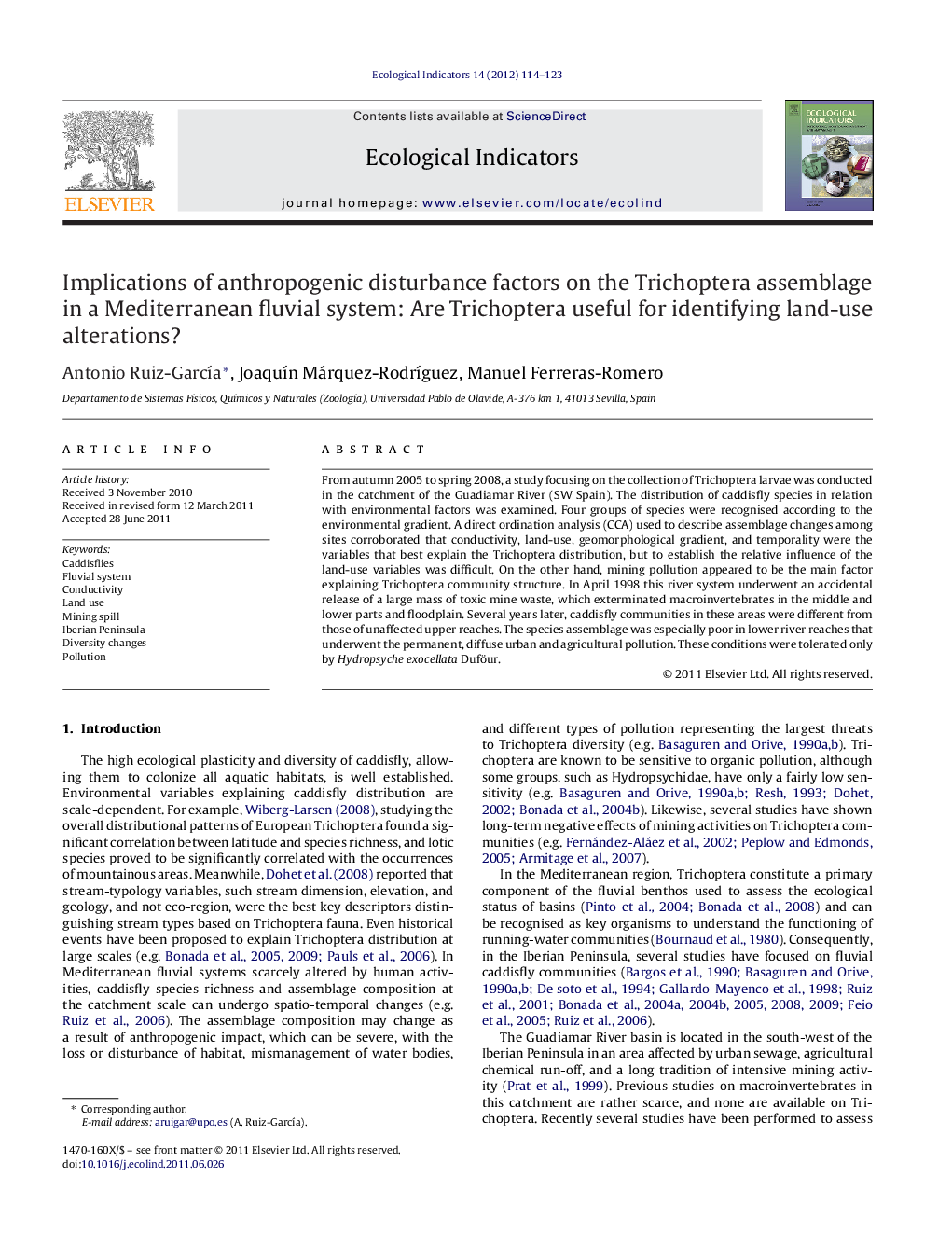| Article ID | Journal | Published Year | Pages | File Type |
|---|---|---|---|---|
| 4373890 | Ecological Indicators | 2012 | 10 Pages |
From autumn 2005 to spring 2008, a study focusing on the collection of Trichoptera larvae was conducted in the catchment of the Guadiamar River (SW Spain). The distribution of caddisfly species in relation with environmental factors was examined. Four groups of species were recognised according to the environmental gradient. A direct ordination analysis (CCA) used to describe assemblage changes among sites corroborated that conductivity, land-use, geomorphological gradient, and temporality were the variables that best explain the Trichoptera distribution, but to establish the relative influence of the land-use variables was difficult. On the other hand, mining pollution appeared to be the main factor explaining Trichoptera community structure. In April 1998 this river system underwent an accidental release of a large mass of toxic mine waste, which exterminated macroinvertebrates in the middle and lower parts and floodplain. Several years later, caddisfly communities in these areas were different from those of unaffected upper reaches. The species assemblage was especially poor in lower river reaches that underwent the permanent, diffuse urban and agricultural pollution. These conditions were tolerated only by Hydropsyche exocellata Duföur.
